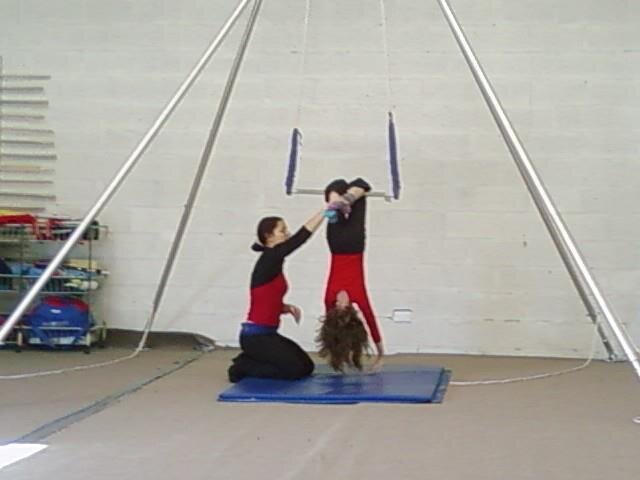Just had an email conversation with a parent of a dance kiddo that wants to do an aerial silk performance during a dance show rented by a public group. I told her it wasn't possible with our counterweight system (I neglected to mention that ZFX, Foy, Hall, et al could be hired to do such a thing because I think she would've pushed the issue and they don't have the bread to afford them).
She first mentioned to me that she needed a beam capable of hanging 500#. She later tells me her daughter weighs 112# and their coach said it was OK to use a point with a MBS of 500#. Ignoring the fact that (assuming a static load) it's 60# under 5:1 safe WLL, this girl I imagine is bouncing and twirling on these things which would increase her weight on the silks many times, possibly beyond the 500# MBS as dictated neccessary by her instructor. Not to mention that she really should be thinking about using a 10:1 WLL.
I think she's already a bit annoyed with me for saying no dice, but should I say anything more about how 500# isn't really a safe number to go with? I'm concerned that might really piss her off. I was thinking of contacting the dance instructor herself (I don't think this aerial work is through her studio). Any aerialists in here? I'm not sure who her trainer is, but I don't know much about that world.
She first mentioned to me that she needed a beam capable of hanging 500#. She later tells me her daughter weighs 112# and their coach said it was OK to use a point with a MBS of 500#. Ignoring the fact that (assuming a static load) it's 60# under 5:1 safe WLL, this girl I imagine is bouncing and twirling on these things which would increase her weight on the silks many times, possibly beyond the 500# MBS as dictated neccessary by her instructor. Not to mention that she really should be thinking about using a 10:1 WLL.
I think she's already a bit annoyed with me for saying no dice, but should I say anything more about how 500# isn't really a safe number to go with? I'm concerned that might really piss her off. I was thinking of contacting the dance instructor herself (I don't think this aerial work is through her studio). Any aerialists in here? I'm not sure who her trainer is, but I don't know much about that world.



